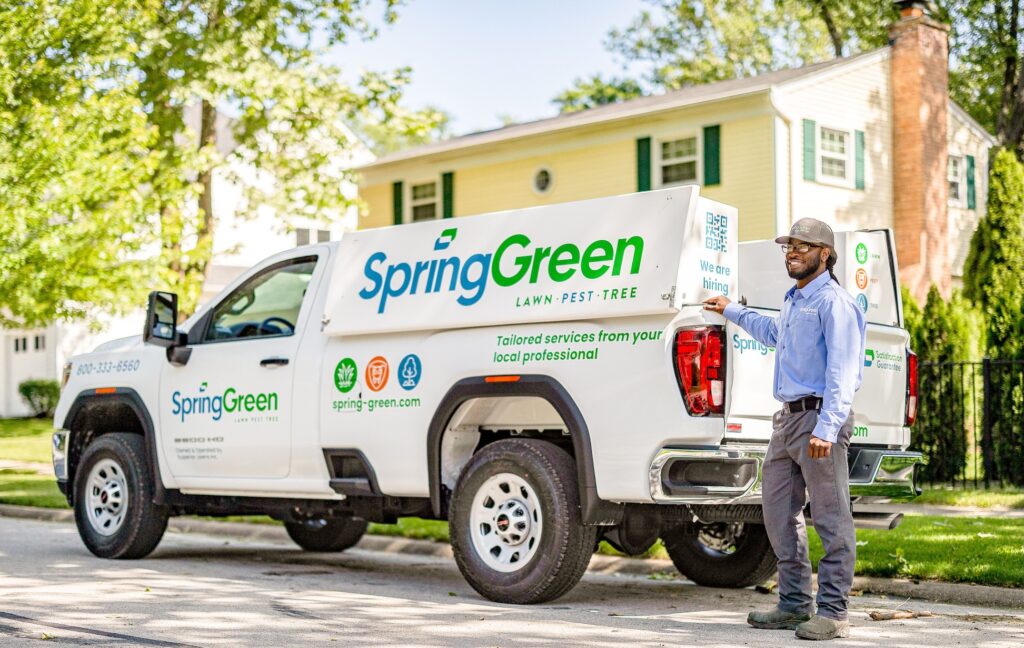Your landscaping business just got a warning signal. On September 21, 2025, the Trump administration hit H-1B visas with a huge fee increase. The cost jumped from about $4,500 to $100,000 per worker. That’s a 2,000% increase overnight.
You might think this doesn’t affect you. H-1B visas are for tech companies hiring skilled foreign workers. But here’s the thing: if they can change H-1B fees this fast, what stops them from doing the same with H-2B visas?
Why This May Matter to Landscaping Businesses
Many landscaping companies depend on H-2B workers during busy season. You know how hard it is to find local workers willing to do landscape work. The pay is decent, but the hours are long and the work is tough.
According to CBS News, the H-1B changes target programs that “replace American workers with lower-paid foreign workers.” This same thinking could easily apply to H-2B programs.
Right now, H-2B visas cost you between $1,700 and $4,500 per worker. But policy can change fast. The recent H-1B visa surprise proves that.
The H-2B Program is Already Risky
Even without fee increases, the H-2B program has become a gamble. The National Association of Landscape Professionals reports that only 24.5% of spring applications get approved in the first round.
“The H-2B program is something that’s great, but it’s always a gamble, unfortunately,” says Nubia Guiterrez from Mullin landscaping company. “As landscape companies begin to rely on it more, it becomes more difficult for you to function without it.”
Many business owners plan their whole season around getting these workers. Then they find out in January whether they won or lost the lottery. It’s no way to run a business.
Shayne Newman from YardScapes puts it bluntly: “You’re basically playing the lottery with your labor.”
What $100K Visa Fees Would Mean for You
Let’s do the math: Say you normally bring in 15 H-2B workers for the season. If H-2B fees followed the H-1B model, you’d face an extra $1.5 million in costs. Most landscaping companies can’t absorb that kind of hit.
The timing is terrible. The American Farm Bureau Federation shows that landscaping makes up almost 40% of all H-2B jobs. Your industry depends on this program more than any other.
But local workers still aren’t available. Many markets can’t find people willing to do landscape work. The hours are long and the work is physical. That labor shortage isn’t going away.

Why Smart Business Owners are Diversifying Now
Here’s what successful landscaping professionals are doing. Instead of putting all their eggs in the H-2B basket, they’re adding different types of services. Green industry services that don’t demand as many workers.
This is where a SpringGreen franchise makes sense. Traditional landscaping requires crews for planting, mulching, and installation. But lawn care applications work differently. You need fewer people per job. The work requires more skill than muscle. Think about it:
- Fewer workers needed: Application work takes 1 employee per vehicle instead of 5-6
- Different busy season: Treatment programs run spring through fall
- Better profit margins: Specialized services command higher prices
- Year-round recurring revenue: Customers need treatments all season long
Real Examples from the Field
Many landscaping business owners have already made this move. They keep their core landscaping work but add lawn treatment services. It spreads out their revenue and reduces their dependence on seasonal labor.
The smart ones started diversifying before they had problems. They didn’t wait for their H-2B applications to get rejected. They didn’t wait for fee increases.
The Benefits of Strategic Partnership
Working with an established franchise system like SpringGreen offers immediate advantages:
Proven Systems: You get business models that already work. No guessing about what services to offer or how to price them.
Training and Support: Professional development for you and your staff. Learn the science behind plant health care and lawn treatments.
Marketing Resources: Professional marketing materials and brand recognition. Customers already know and trust the SpringGreen name.
Vendor Relationships: Established supplier networks and better pricing on materials.
Different Service Model, Less Risk
Here’s the key difference. Traditional landscaping depends heavily on installation crews. You need lots of workers for planting, hardscaping, and maintenance. When you can’t get H-2B workers, you’re stuck.
Lawn care, tree care and pest control applications work differently. A skilled technician can treat many properties in a day. The work requires knowledge of plant health, soil conditions, and proper application techniques. It’s less about having many hands and more about having the right expertise.
This model has several advantages:
- Less dependence on seasonal labor programs
- Higher skill level means better pay for workers you do hire
- More consistent revenue throughout the growing season
- Services that customers need regardless of economic conditions
Taking Action Before Changes Hit
The landscaping professionals who will thrive are those who see these warning signs and act. They don’t wait for problems to develop. They build stronger, more diverse businesses now.
Whether H-2B fees increase or not, having multiple revenue streams makes your business more resilient. You’re not betting everything on one program that might change overnight.
Strategic partnerships with proven systems offer the fastest path to diversification. You get established processes, training, and support. Most importantly, you get a different business model that doesn’t depend as heavily on seasonal workers.
The Bottom Line
The H-1B fee increase is your wake-up call. Immigration policy can change fast. The programs you depend on today might look very different tomorrow.
Smart business owners don’t wait for problems to hit. They diversify their services and reduce their risks. They build businesses that can succeed regardless of what happens with visa programs.
The landscaping companies that grow over the next decade will be those who recognize these warning signs. They’ll be the ones who took action before they had to.
Don’t wait until you’re scrambling to find solutions. Start building a more resilient and diversified business today with SpringGreen. Your future self will thank you.

